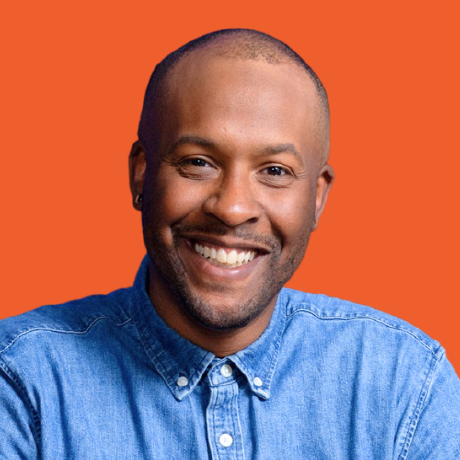In this episode of Semaphore Uncut, we chat with Brian Douglas—former GitHub developer advocate, founder of OpenSauced, and now part of the Linux Foundation’s CNCF ecosystem team.
Brian shares his journey from helping developers contribute to open source more effectively, to leading a startup acquired by the Linux Foundation, and his latest focus: how AI tooling and open source infrastructure are reshaping developer workflows—and, ultimately, the future of software delivery.
From GitHub to OpenSauced
Brian began his career as a software engineer and joined GitHub’s developer relations team, helping shape the early community of maintainers and contributors.
While there, he noticed a problem: developers contributing to open source lacked a clear way to track their pull requests across projects.
“I wanted a CRM for pull requests—a single place to see where my contributions were, what stage they were in, and what was missing.”
That idea became OpenSauced, a platform offering developer insights into open source projects. After several years of building and serving enterprise clients, OpenSauced was acquired by the Linux Foundation and integrated into the LFX platform, which helps organizations manage and grow open source ecosystems.
Joining the Linux Foundation and CNCF
Now, at the Cloud Native Computing Foundation (CNCF), Brian works on ecosystem and user engagement—connecting enterprises like Apple, Capital One, and J.P. Morgan with open source cloud technologies.
“Our job is to get enterprises not just to consume open source, but to contribute—through code, funding, and sharing case studies.”
For leaders managing modern infrastructure, this is the center of gravity: Kubernetes, ArgoCD, and the rest of the CNCF stack underpin the world’s software delivery systems.
AI Tooling Comes to Infrastructure
Brian sees AI as the next transformative layer on top of open source infrastructure—similar to how CI/CD reshaped delivery pipelines a decade ago.
“Kubernetes is already the substrate for the cloud. The next step is making it the substrate for AI.”
New tools, from K8sGPT (AI-assisted debugging for clusters) to RunAI and SF Compute (GPU scheduling and distributed compute), are extending DevOps patterns into AI infrastructure.
That means engineers will soon deploy AI clusters across regions, manage GPU resources as code, and integrate model evaluation directly into CI/CD pipelines.
“We’re moving from calling APIs to running our own small, fine-tuned models. That’s where cost control and performance live.”
AI Engineers and the New Workflow
Brian describes a growing divide—and eventual convergence—between traditional ML practitioners and the new generation of AI engineers:
- ML engineers: deep in data science, training, and evaluation.
- AI engineers: focused on shipping features quickly with APIs and frameworks.
Over time, these roles will merge, as infrastructure becomes the bridge between experimentation and production.
“Think of it like DevOps for AI—teams deploying and monitoring models, not just writing prompts.”
From Copilot to Autopilot
Brian compares today’s developers to airline pilots:
“Pilots don’t do barrel rolls—they supervise automation. Engineers will soon do the same.”
He cautions against what he calls “vibe coding”—blindly accepting AI-generated code without understanding it.
The future developer’s skill lies in:
- Designing guardrails for AI assistants (rules, style guides, system prompts).
- Running AI evals in CI to prevent regressions.
- Understanding why a fix works—not just letting the model “patch and go.”
These new workflows will raise the engineering floor: smaller teams, fewer repetitive tasks, more focus on architecture, testing, and governance.
Open Source, Context, and “Policy-as-Prompt”
One of Brian’s recurring themes is context. Whether in open source or enterprise teams, knowledge needs to be encodedinto the tools developers use.
He’s experimenting with policy-as-prompt—embedding organizational rules, API versions, and style conventions into the assistant’s context window.
“Instead of Post-it notes next to your merge button, you build the rules into your AI copilot.”
Paired with retrieval-augmented generation (RAG), this approach lets teams query their entire history of projects and incidents:
“Have we solved this before? Who fixed it? Which version broke it?”
The Human Side of Open Source + AI
Despite the automation narrative, Brian believes human creativity and curiosity will remain central to engineering culture.
“There’ll always be people who love building by hand—just like vinyl records never went away.”
The opportunity for leaders is to build teams that supervise automation effectively: crafting standards, encoding institutional knowledge, and using open source as a multiplier for innovation.
Looking Ahead
For Brian, the next decade of engineering looks less like writing code and more like orchestrating systems that write, test, and deploy code—all running on open infrastructure.
“Today you’re a cloud engineer. Tomorrow you’re an AI-enabled cloud engineer. That’s where we’re headed.”
As AI merges with CI/CD, the most successful teams will be those who:
- Treat AI evals like tests and prompts like code.
- Run AI workflows on Kubernetes for scale and reliability.
- Keep humans in the loop for context, ethics, and judgment.
Follow Brian Douglas
🔗 LinkedIn
🌐 GitHub – bdougie
📬 Website
